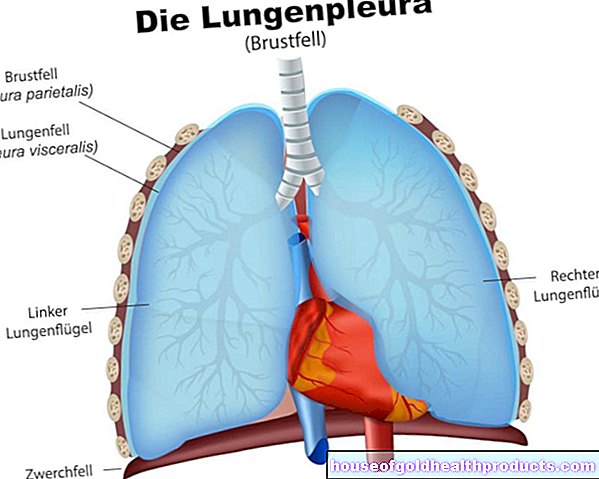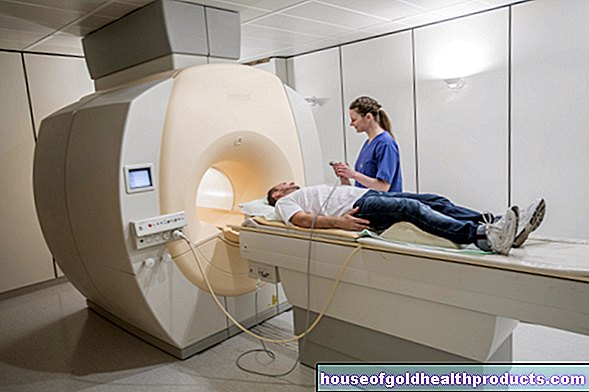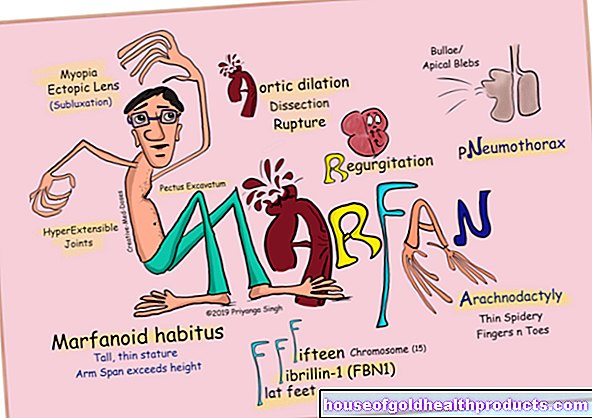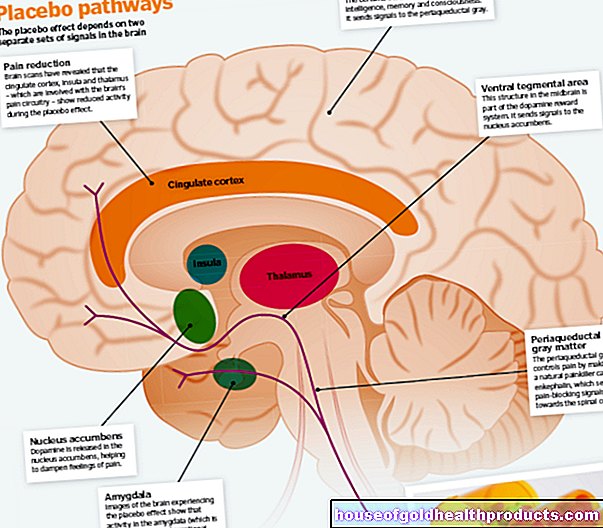Stroke: life-saving procedure using a catheter
Dr. med. Andrea Reiter is a freelance writer for the medical editorial team.
More about the experts All content is checked by medical journalists.A stroke is a meltdown for the brain. Many patients remain permanently severely impaired - for example, they are partially paralyzed or can no longer speak properly. 40 percent even die from the consequences. A new procedure could prevent this in many cases: the blood clot that is blocking the cerebral blood flow is pulled out of the blood vessel.
A stroke causes a sudden circulatory disorder in the brain - a life-threatening condition. Most often the cause is a blood clot called a thrombus, which interrupts the flow of blood in a cerebral artery. To save the patient from severe paralysis or even death, the clot must be removed as soon as possible. The so-called "lysis therapy" is used for this purpose: the patients receive drugs that thin the blood and dissolve the clot: But this is not sufficient in all cases: despite the treatment, remnants of the thrombus are still in the cerebral artery and disrupt the blood flow.
Clot is pulled out
In such cases, doctors also rely on a newer method. A doctor pushes a catheter up to the blocked brain vessel. There a small stent unfolds, a mesh of wire that attaches to the vessel wall. The blood clot is caught in this network and can then be pulled out of the vessel.
The success is sometimes astonishingly quick: some patients regained their ability to talk during treatment or were able to move arms and legs again, reports Prof. Christoph Groden, President of the German Society for Neuroradiology (DGNR).
The method is called "Endovascular Therapy". In the past few months, five new studies that have been presented at neurological congresses around the world have shown that it works. The study results promise a revolution in stroke therapy - at least for some of the patients. Although the procedure could not always prevent permanent disability after a stroke, the number of patients who were able to take care of themselves despite the consequential damage of the stroke rose by 20 percent. A smaller study with 70 affected people was even stopped prematurely because of a high success rate - the results were so convincing that they did not want to withhold therapy from a control group. In two other studies, mortality was reduced by ten percent.
Revolutionary Therapy?
However, endovascular therapy is by no means suitable for every stroke patient. When selecting patients, the current studies were limited to cases in which the procedure appeared to be particularly promising according to previous studies. The first symptoms could not have appeared more than twelve hours before the treatment. The patients also had to show serious impairments such as paralysis or a pronounced language disorder. In addition, the infarct had to affect a vessel in the brain stem - such strokes are particularly serious.
"The treatment is an option for around five percent of stroke patients," says Prof. Christoph Groden, President of the German Society for Neuroradiology (DGNR). "That doesn't sound like a lot at first, but you have to consider that these are very severely affected patients."
Save brain tissue from damage
According to initial estimates, 10,000 people with a severe stroke in Germany could be saved from severe disabilities or death with the new catheter procedure every year. The method is already used in 60 neurological centers. Patients who are initially cared for in smaller clinics must be brought to one of these centers while the lysis drug is being administered to them.
Around 270,000 people in Germany suffer a stroke every year. Most of the time it affects the elderly, but younger and even children can also have a stroke. This interrupts the blood flow in the brain. This happens when the arteries are very calcified or a blood clot migrates into the brain vessels. In that case, the undersupplied nerve tissue around the blocked artery perishes. The longer the lack of oxygen supply lasts, the greater the permanent damage. It is therefore particularly important to start therapy as early as possible.
Sources:
http://www.aerzteblatt.de/nachrichten/62546/Schlaganfall-Zwei-Studien-bestaetigen-Vorteile-der-fruehen-Thrombektomie
http://www.dsg-info.de/presse/pressemmeldung/2-nachrichten/allgemeine-nachrichten/428-komplexe-schlaganfalltherapie-mit-grossem-nutzen.html
Tags: anatomy prevention diet






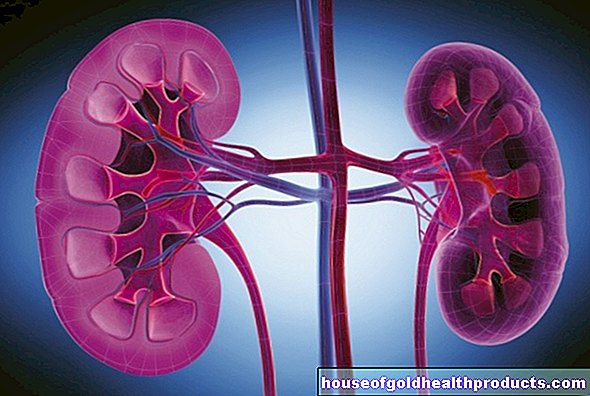

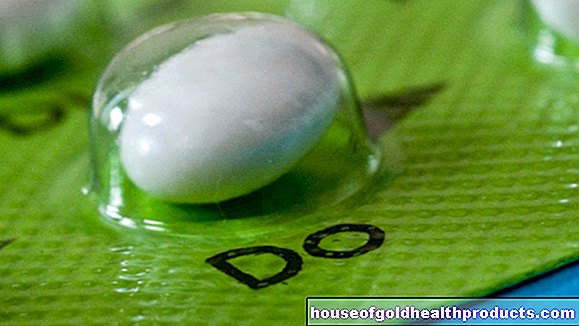

.jpg)



-der-giraffentrick.jpg)





